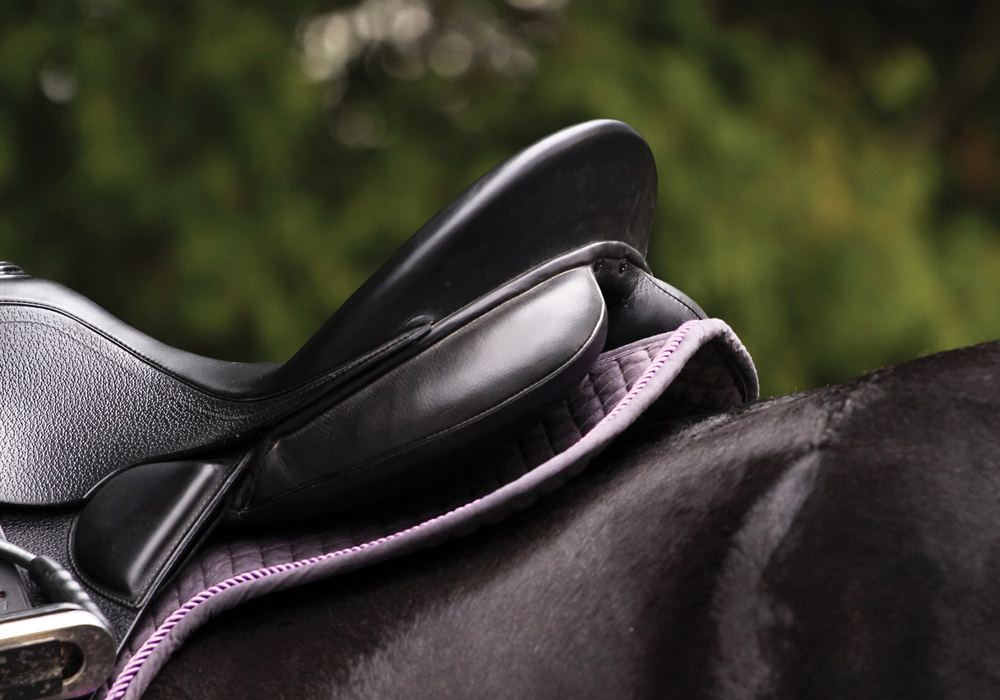Occasional irreparable damage may be caused by a badly fitting saddle.
We have discussed several aspects of a badly fitting saddle. These include incorrectly faced tree points, too narrow gullet channels, and not enough freedom at the withers all around the pommel area. All these can lead to the symptomatic appearance of various issues that warrant calling out the veterinarian, such as persistent lameness, back pain, S-I joint issues and more.
Muscle Atrophy 
The illustrations with this article show some of the actual damage that can be caused by a culmination of one or more of these features on poorly fitting saddles. These include cartilage shearing at the shoulder blade, pinched nerves, vertebral subluxations – and muscle atrophy, to name a few.
What exactly is muscle atrophy? If a saddle puts too much pressure on a muscle because of being out of balance, the horse wants to avoid and lessen this pressure – resulting in a protective postural change that affects his gaits and causes muscle contraction. These muscles then begin to atrophy because they will experience circulatory inhibition and less necessary nutritional supplementation. However, fix the problem and the picture can be changed for
the better again.
Muscle definition, on the other hand, can be considered either positive or negative, since muscles can develop correctly through training, or incorrectly as the result of a “protective posture” against saddle pressure.
Photo 1:
Incorrect definition of the muscles at the croup caused by a saddle that was too long (and incorrect training).
Photo 2:
This muscle definition at the croup was caused by a gullet channel that was too narrow.
Photo 3:
Muscle contraction at the flank as the result of a saddle pinching at the withers or on the vertebrae (tree angle incorrect; gullet channel too narrow).
Photo 4:
The result of a saddle pinching at the 18th rib (saddle too long).
Photo 5:
Stress lines at the withers/shoulder area due to constant pressure at the side of the withers (not enough space at the sides of the pommel area).
Photo 6: This crippled back is the result of years of riding in a badly fitting saddle.
Jochen Schleese is a Certified Master Saddler who graduated from Passier and came to Canada as Official Saddler at the 1986 World Dressage Championships. He registered the trade of saddlery in North America in 1990. Jochen’s lifelong study of equine development, saddle design, the bio-mechanics of horse and rider in motion, and the effects of ill-fitting saddles, led to the establishment of Saddlefit 4 Life in 2005 (saddlefit4life.com), a global network of equine professionals dedicated to protecting horse and rider from long term damage.








